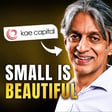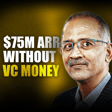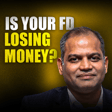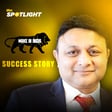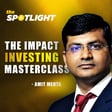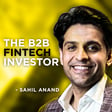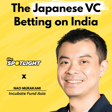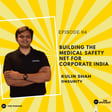
Subin Mitra (Groyyo) on Funding, Factories & Fast Fashion
How did a 23-year-old founder turn a near-death crisis into a profitable manufacturing startup? This is the untold story of Groyyo's dramatic pivot from losses to EBITDA-positive growth in India's apparel export industry.
In this episode, Subin Mitra, Co-Founder and CEO of Groyyo, shares the raw, unfiltered journey of building one of India's most promising B2B manufacturing platforms. From cracking Bain & Company at just 19 to witnessing the spectacular collapse of unicorn Zilingo, Subin's path to entrepreneurship is anything but conventional. He opens up about Groyyo's dramatic pivot after raising $40 million from Tiger Global, the painful decision to shut down a failing B2B trading business, and how the company transformed from spending ₹1.24 to earn ₹1 into a lean, profitable operation with 20%+ take rates.
This conversation with host Akshay Datt explores the realities of digitizing 20 million MSME manufacturers across South Asia, riding the China+1 wave, and why small factories are winning against scale economies in the fast fashion era. Subin reveals contrarian insights about marketplace business models, capital efficiency in the funding winter, and why Groyyo deliberately waits to work with Zara despite having direct access.
Whether you're a founder navigating growth challenges, an investor evaluating B2B opportunities, or simply curious about how global supply chains actually work, this episode delivers actionable wisdom from the manufacturing frontlines.
Key Highlights:
👉How Subin built Groyyo from ₹25 crore to ₹600 crore ARR while achieving EBITDA profitability in India's toughest funding environment
👉The untold story of Groyyo's near-death experience, investor intervention with Deloitte, and the strategic pivot from domestic trading to high-margin export services
👉Why Groyyo's "anti-scale" thesis, betting on thousands of small MSME factories over large manufacturers, creates a defensible moat in fast fashion supply chains
👉Inside the services flywheel strategy that commands 20-30% take rates through integrated consulting, design studios, and factory digitization versus pure marketplace models
👉Geopolitical tailwinds driving India's manufacturing moment, the reality of China+1 strategy, and how tariffs are reshaping global apparel sourcing from Bangladesh to Vietnam
👉Lessons from Zilingo's $300 million collapse, the dangers of growth-at-all-costs culture, and what separates sustainable B2B businesses from ticking time bombs
#IndianManufacturingStartups #B2BMarketplace #ApparelExportIndia #MSMEDigitization #StartupPivotStrategy #FashionSupplyChain #ChinaPlusOneStrategy #ManufacturingAsAService #FastFashionDisruption #StartupProfitability #FundingWinterSurvival #B2BStartupIndia #ExportManufacturing #GarmentIndustryIndia #SupplyChainTechnology #BangladeshManufacturing #ZilingoLessons #GrowthToProfit #CapitalEfficiency #IndianUnicorns

